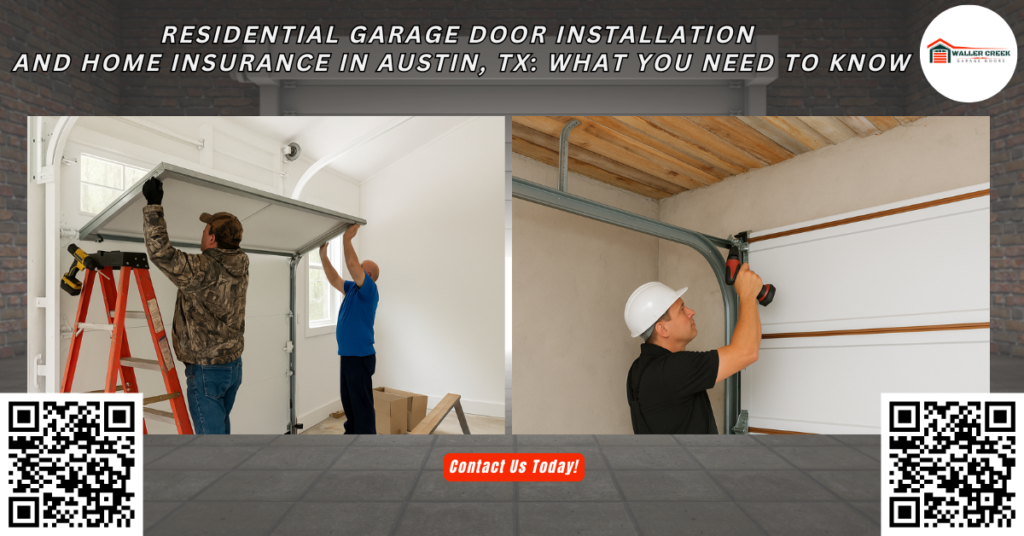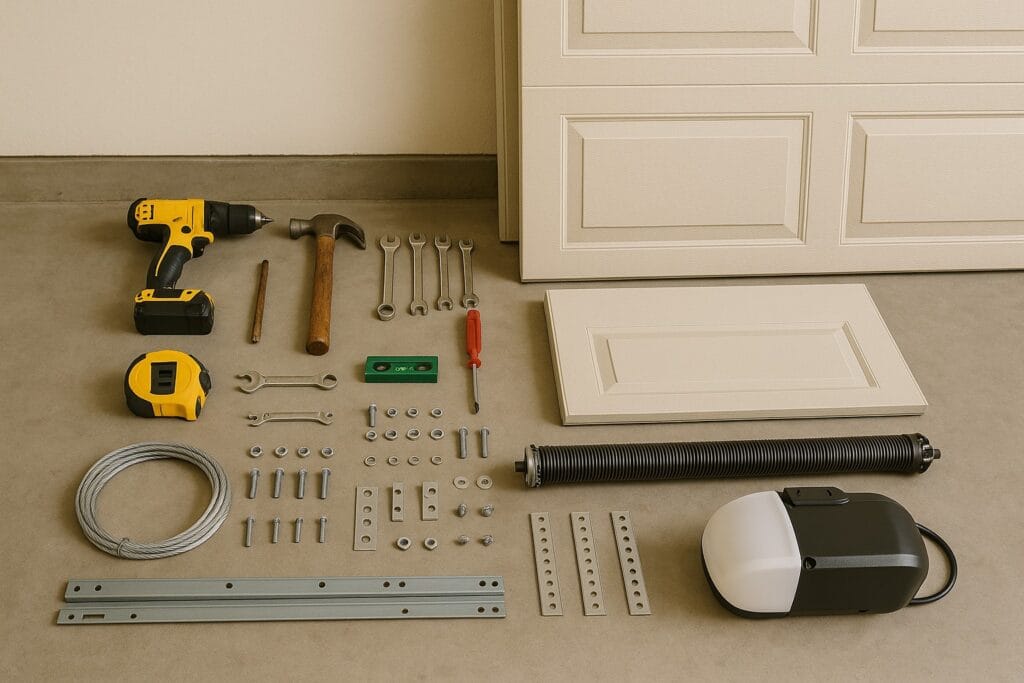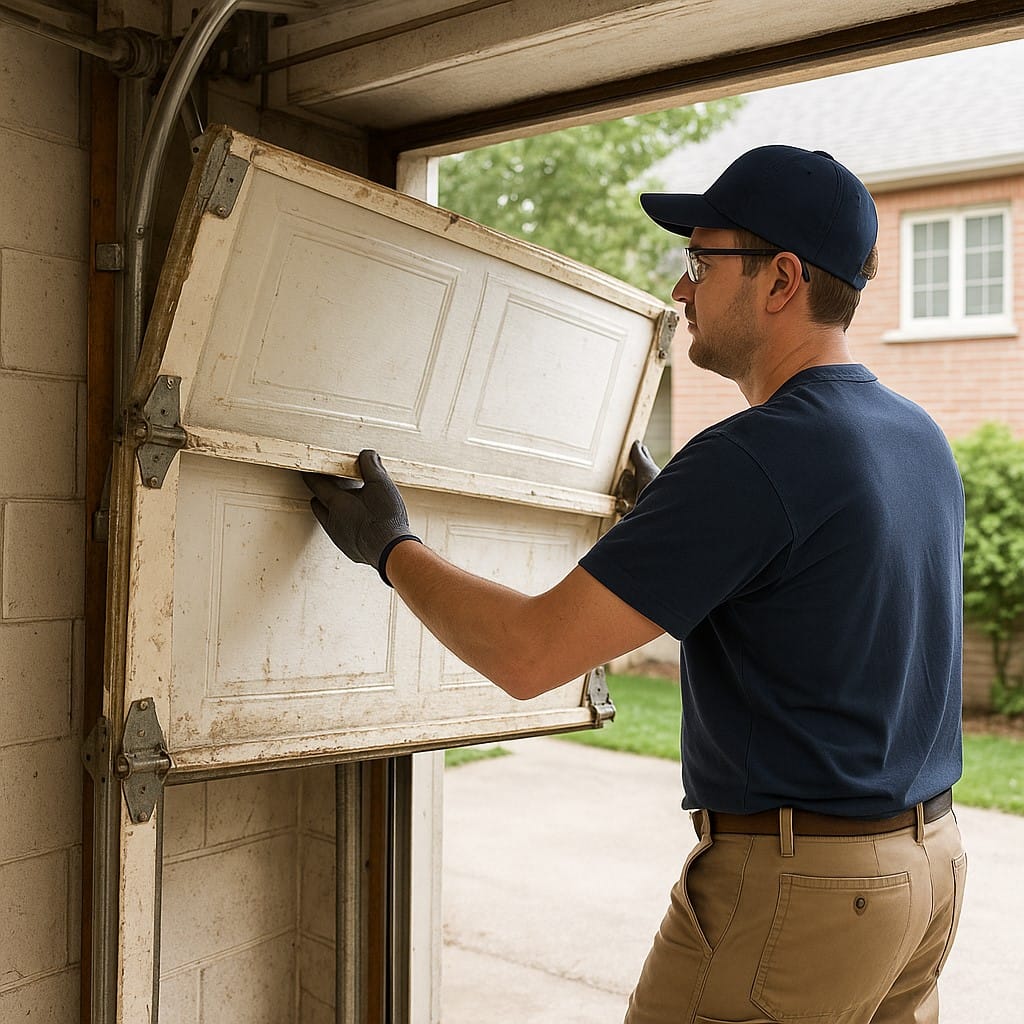Residential Garage Door Installation and Home Insurance in Austin, TX: What You Need to Know

A recent case in South Austin involved a homeowner whose garage door was badly damaged by a sudden wind gust during a summer storm. Though their residential garage door installation was relatively new, their insurance provider rejected their claim due to an improperly mounted torsion tube and loose center bracket. That installation had been done by an unlicensed handyman, not a professional garage door company. The result? Hundreds of dollars in repairs and a lesson learned the hard way.
According to home industry research, more than 80% of homes in the U.S. feature garage doors, and in Central Texas, they’re essential not only for protection but also for energy efficiency. With temperatures soaring in the summer and unpredictable storms throughout the year, the condition of your garage door installation can significantly affect your home’s safety, insurance, and overall energy consumption.
At Waller Creek Garage Doors, we’ve seen it all from broken torsion springs and cracked garage door panels to detached brackets and malfunctioning garage door openers. That’s why we’ve created this comprehensive guide to help Austin homeowners understand how residential garage door installation affects their home insurance and how to make smart, cost-effective decisions that protect their homes.
Why Residential Garage Door Installation Matters in Austin, TX
A residential garage door is more than just a decorative feature; it’s a working system that involves multiple mechanical parts, including springs, brackets, tracks, panels, and a garage door opener. These parts must work together for the door to open and close smoothly and safely. A professional installation ensures proper alignment, correct spring tension, and precise placement of the garage door panels and tracks for a smooth operation.

In Austin’s climate, quality insulation within your garage door panels also plays a major role in regulating indoor temperatures. High R-value insulation keeps the heat out in the summer and the warmth in during the winter, reducing energy consumption and increasing the overall energy efficiency of your home.
Installing a new garage door with modern features like safety sensors, a high-cycle torsion spring system, or a smart garage door opener can also boost your property value and curb appeal. Homes in neighborhoods like Mueller or Zilker see increased real estate interest just by upgrading their overhead doors.
Understanding Garage Door Components and the Installation Process
A proper residential garage door installation follows a detailed, step-by-step procedure:
1. Removing the Old Door

The first step is to safely remove the old door. This includes loosening the spring tension, detaching the torsion springs, unbolting the hinges, and taking down the existing door panels one section at a time from the top section to the bottom panel. Safety tools like a vise grip, cone, and zinc hex lag bolts are necessary to prevent injury during this phase.
2. Assembling the New Garage Door
Next, the garage door panels are laid out and connected using brackets, hinges, and bolts. The bottom panel includes a seal for weatherproofing and is aligned with the garage floor. Vertical tracks are mounted first, followed by horizontal tracks, and then the torsion tube, drum, and cable system.
3. Installing the Torsion Spring System
Torsion springs are installed above the door on the torsion tube, which rests on the center bracket and connects to the flag brackets on either side. These springs store energy to lift the door, making manual and automatic operation much easier. Accurate spring tension is vital for a smooth and safe operation.
4. Setting Up the Opener
A modern garage door opener is installed on the ceiling and connected to the door with an arm that controls movement. If installing a smart opener, you’ll also connect it to a Wi-Fi system for remote access.
5. Final Testing and Inspection
Finally, the entire system is tested. The door should move smoothly along the vertical and horizontal tracks, close flush with the ground, and reverse if the safety sensors detect an object. Proper installation instructions and manufacturer guides are followed to ensure a successful garage door setup.
Insurance Considerations for Garage Door Installation
When it comes to home insurance, your garage door is part of the property’s exterior envelope. In most policies, damage to the garage door caused by storms, theft, or accidents is covered, but with key conditions.
Key Insurance Factors:
- Cause of Damage: Damage from hail, wind, or burglary is generally covered; damage due to poor installation, wear and tear, or lack of maintenance is not.
- Installation Quality: Insurance companies often require professional garage door installation. DIY installations or unlicensed work may void your coverage.
- Maintenance: Insurance adjusters may request proof of routine maintenance and records of previous repairs. This includes lubrication, tightening bolts, and inspecting cables and springs.
- Garage Type: Is your garage attached or detached? Some insurers cover attached garages under the main policy but require additional coverage for detached structures.
Real-World Scenarios from Austin Homes
Here are some actual scenarios we’ve encountered in the Austin area:
Scenario 1: Storm Damage in Brentwood
A client with a steel-insulated garage door had damage from hail and high winds. Thanks to their professional installation and regular maintenance documentation, their insurer covered the full repair cost, including panel replacement and realignment of the vertical track.
Scenario 2: Car Impact in Oak Hill
A teenage driver reversed into a closed garage door, damaging the bottom section and throwing the cable drums off balance. Since the door had not been properly installed and the bracket bolts were missing, insurance refused coverage. Our team installed a new garage door, reinforced with a torsion spring system and heavy-duty brackets.
Scenario 3: Break-In in South Congress
A burglar forced open an old, wooden garage door with loose hinges and no safety sensors. After upgrading to a modern overhead door with smart tech and insulated panels, the homeowner qualified for a lower insurance premium due to enhanced security features.
How to Maximize Insurance Coverage with the Right Garage Door
To protect your investment and ensure eligibility for insurance coverage:
✅ Hire Certified Professionals: Use a licensed company like Waller Creek Garage Doors for professional garage door installation.
✅ Use Quality Materials: Opt for energy-efficient, impact-resistant materials with good R-values.
✅ Maintain Documentation: Keep receipts, warranty info, and records of routine maintenance.
✅ Schedule Annual Inspections: Prevent costly surprises by catching worn springs, rusted tracks, or bent brackets early.
✅ Upgrade for Efficiency and Safety: New garage door openers, insulated panels, and advanced safety sensors all contribute to better insurance terms.
Local Building Codes and Permits in Austin, TX
In Austin, most residential garage door installations do not require a permit if you’re replacing a door of the same size. However, if you’re resizing the garage door opening, reinforcing framing, or upgrading to a heavier door system, a permit may be necessary. Austin’s local codes may also dictate acceptable insulation, wind-load ratings, and safety features.
We handle:
- 📋 Permit applications
- 📏 HOA approvals
- 🔍 Code-compliant installations for all garage styles
Frequently Asked Questions (FAQs)
Q: Does installing a new garage door increase my home’s resale value?
Yes, replacing your garage door is one of the top home improvements for ROI, often boosting resale value by over 90% of the project cost.
Q: Can I install a garage door myself to save money?
While DIY installation may save upfront costs, improper installation can lead to safety hazards, void warranties, and complicate insurance claims.
Q: Will a smart garage door opener affect my insurance rates?
Some insurers offer discounts for smart openers with enhanced security features, but it’s best to check directly with your provider.
Q: How often should garage door springs be replaced?
Garage door springs typically last 7–10 years with regular use and should be replaced at the first sign of wear or imbalance.
How Can Waller Creek Garage Doors Help You?
At Waller Creek Garage Doors, we understand the ins and outs of a safe, efficient, and insured residential garage door installation. Our team of trained technicians uses the best tools, materials, and industry practices to ensure that every garage door we install is safe, secure, and long-lasting.
📍 Address: 816 Tirado St, Austin, TX 78752
📞 Phone: (512) 642-5669
Whether you’re upgrading your garage door, installing a new garage door opener, or need help navigating your insurance claim, we’re here to help with expert advice and reliable service. Our work meets local building codes and exceeds manufacturer specifications, ensuring a successful garage door installation every time.
Contact us today for a free estimate and step into a safer, more efficient home with Waller Creek Garage Doors.
